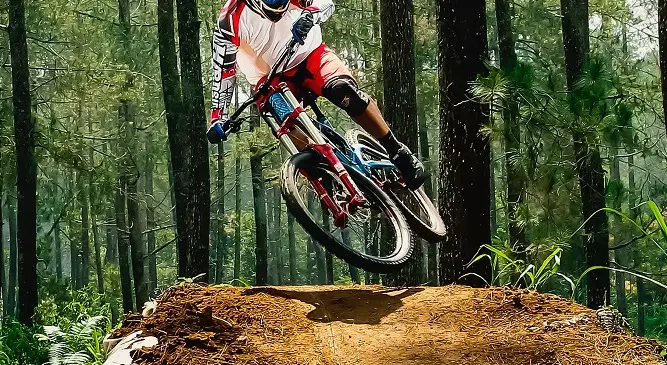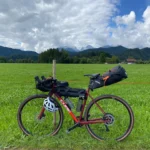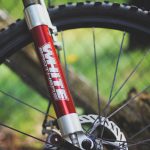Mountain biking can be an exhilarating sport, but it does come with some safety considerations. One important but often overlooked accessory is bar ends. These are attachments that go on the ends of straight bike handlebars to provide more hand positions and control. But what exactly are bar ends for on a mountain bike?
Improving Hand Positions and Comfort
Bar ends serve multiple functions when riding off-road trails. Most importantly, they give you additional spots to place your hands apart from just the middle of the handlebar. Having multiple places to put your hands helps take pressure off your palms and wrists so they don’t get sore or go numb during long rides over bumpy terrain.
Bar ends also give you more leverage and torque when turning as you can push or pull on the very ends of the bars. This allows for quicker steering and handling. The extra leverage is key for quick maneuvers over roots, around tight switchbacks, or dodging obstacles on the trail.
Preventing Injuries in a Crash
In addition to comfort and control, bar ends play an important safety role in case of an accident. Mountain biking carries an inherent risk of crashing, especially at high speeds over rough features like rocks, drops, or jumps.
Having bar ends helps prevent chest and torso injuries during a crash. When you go over the handlebars, the ends help deflect your body away from the sharp middle part of the bar hitting your upper body directly. They essentially create a larger surface area to help lessen impact forces on delicate areas like ribs, internal organs, and collarbones.
Adding Positions for Climbing
Bar ends aren’t just useful for downhill riding – they also create better leverage options when pedaling uphill. When you’re struggling up a steep incline or technical section, you can move your hands to the ends of the bars.
This shifts your body weight forward and centers your gravity better for climbing. It also allows you to pull up as well as push down with each pedal stroke, engaging your upper body to assist tired legs. The multiple positions essentially turn your straight handlebar into a makeshift set of bullhorn bars.
Having properly installed bar ends can make a big difference in overall comfort, control, and safety when riding rugged mountain bike trails. They help take pressure off your hands, provide extra leverage for turning, deflect impact in crashes, and give you another helpful hand position when tackling climbs.
How to Install Bar Ends Correctly
If you want to experience the benefits of mountain bike bar ends, it’s key they are installed properly. Improper installation can actually make them dangerous in the event of a crash. There are a few simple steps to follow:
First, make sure your handlebars have plugged or capped ends so the inserts have something solid to press against. If needed, install bar plugs before attempting to mount the bar ends.
Next, lightly grease the threads on the bar ends as well as inside the handlebars so you don’t overtighten them when screwing them in. Carefully thread the bar ends into the open ends of the bars, alternating back and forth to keep them evenly inserted.
Tighten them until snug using the appropriate sized Allen wrench – but do not overtighten them. If installed correctly, the bar ends should not rotate at all side-to-side. Excessive tightening can weaken the handlebars and cause them to crack or break.
Finally, make sure the rubber grips are properly slid into place and installed flush with the ends of the bars with no gaps. Rotate them to confirm they spin freely without rubbing. And that’s it – you now have safely and properly mounted bar ends ready for trail riding!
What Length Bar Ends Should You Get?
If you’ve decided to put bar ends on your mountain bike, one choice you’ll face is what length to get. Bar ends come in a range sizes from shorter 50mm grips to very long 150mm and even 180mm options. In general, shorter bar ends are best for tighter, slower speed trails while longer ends provide extra leverage and control for downhill riding.
For mountain biking, 100-120mm sized bar ends are ideal for most average sized riders and trail conditions. Shorter 50-80mm versions don’t provide enough improved hand positions and are mainly seen on commuter bikes. Meanwhile, extremely long 150mm+ models are best suited for very aggressive downhill riding as they can get in the way on slower trails.
The most versatile middle length options around 100-120mm give you great extra hand placement without being overly long or cumbersome. Just make sure whichever size you choose is compatible with your grip diameter and installed correctly for safety.
Are Bar Ends Necessary for Mountain Biking?
After learning the various benefits bar ends provide, a common question is whether they are necessary components for mountain biking. Like any accessory, they are not essential to ride off-road trails. But they do offer advantages in key areas that many riders find worthwhile.
Ultimately the decision whether to run bar ends comes down to your riding style and preferences. Aggressive downhill riders will appreciate the extra control and crash protection bar ends provide at high speeds. Less experienced beginners may want to focus more on fundamentals than accessorizing their bikes.
Trying them out to see if you notice a difference is recommended. The upfront cost of quality bar ends is relatively cheap compared to other upgrades. And they don’t require any permanent modifications to your bike. You can always remove them if you don’t feel they benefit your trail riding.
Consider your typical terrain, average speeds, injury history, and riding goals when deciding. For most riders, having bar ends checks important boxes for safety and performance on unpredictable mountain bike trails.






